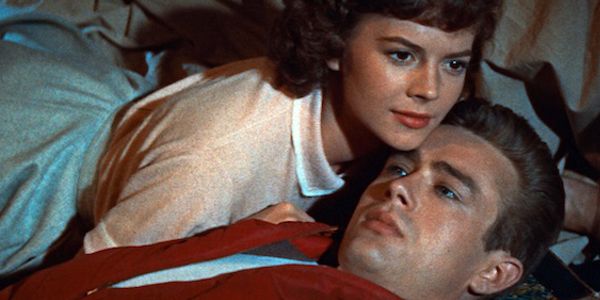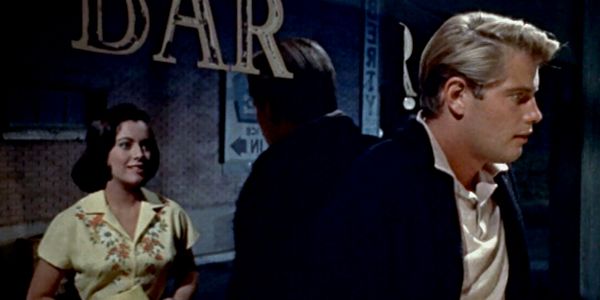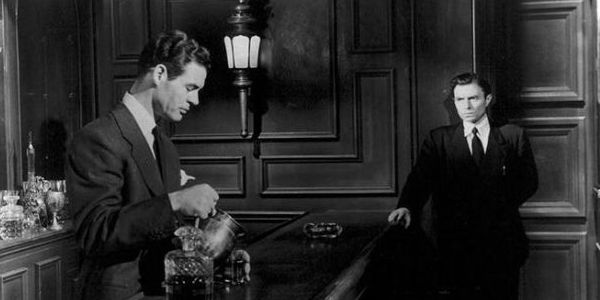The Beginner’s Guide: Hollywood Melodramas

Andrew Emerson is a University of Chicago student. His high…
In everyday conversation, we tend to use words like “melodrama” and “melodramatic” as insults. Specifically, if someone calls something “melodramatic,” what they probably mean is that they found it to be unrealistic, overly emotional, and superficial.
In the context of the history of Hollywood, however, the word “melodrama” refers to a particular genre of films that readily defy all of these pejorative connotations. Originally made and released during America’s “baby boom” years, these films were initially deemed to be crude and simplistic. But in the decades since, they’ve been majorly reassessed, and they’re now considered to be an essential part of the American film canon.
This article will offer an overview of this important but frequently overlooked genre of Hollywood films. It will start by providing some background and historical context for these films and their directors. Afterward, it will describe these melodramas’ defining features, and it will conclude with some suggestions of which melodramas you ought to watch first.
Background
Broadly speaking, the “Hollywood melodrama” genre encompasses a set of stylistically and thematically similar American films that were made in the 1940s and 1950s, during the latter end of Hollywood’s “Golden Age.” The phrase is most frequently used in association with Douglas Sirk, a German-born filmmaker who immigrated to the United States after the Nazis came to power. But historians often also use it to reference the films of Nicholas Ray, the hedonistic director behind Rebel Without a Cause, as well as the American films of Max Ophüls, a German-born filmmaker who worked in America for three years (1947-1950), before returning to Europe.

Before we go any further, it would be beneficial to make a couple of things clear. First, it’s a stretch to suggest that these filmmakers were part of a cohesive “movement.” Unlike the filmmakers behind phenomena like the French New Wave and New German Cinema, Sirk, Ophüls, and Ray did not know each other personally, did not collaborate with one another, and did not sign any kind of collective artistic manifesto.
Second, when watching melodramas, it’s always important to keep in mind the conditions under which they were made. Although there are many aspects of their films that could be considered “auteurist,” Sirk, Ophüls, and Ray were decidedly not arthouse or indie filmmakers. Rather, their films are products of the studio system, and in general, these films’ “language” consists of the techniques and narrative tropes that we traditionally associate with classical Hollywood cinema. (As we will discuss below, what makes these films subversive is that they often use these techniques and tropes for the purposes of irony or parody.)
Once Hated…Now Loved
Back in the day, Hollywood melodramas usually weren’t very successful. Financially speaking, many of them (e.g. Ray’s Bigger Than Life) bombed at the box office. And even those that turned a profit (e.g. Sirk’s Imitation of Life) had to contend with the hostility of film critics, most of whom dismissed them with adjectives like “vapid,” “mawkish,” and “overdone.” These and other factors made it difficult for Sirk, Ophüls, and Ray to prosper within the studio system, and by the start of the 1960s, they were all either dead (Ophüls) or virtual pariahs (Sirk and Ray).
Ultimately, however, you could say that Sirk, Ophüls, and Ray had the last laugh. Starting in the 1970s, critics, directors, and academics began to re-evaluate these filmmakers’ works. Once seen as trite and vacuous, Hollywood melodramas have been re-interpreted as scathing and decidedly self-aware commentaries on middle-class America. Not everyone went along with these reinterpretations, of course – years after its release, the critic Pauline Kael still called Sirk’s All That Heaven Allows “trashy” – but Sirk’s, Ophüls’, and Ray’s films are generally now considered to be some of the finest of the immediate post-World War II era.

Perhaps the best evidence for the importance of Sirk, Ophüls, and Ray is the sheer number of filmmakers they’ve influenced. For instance, Rainer Werner Fassbinder’s Ali: Fear Eats the Soul and Todd Haynes’ Far From Heaven are both remakes of All That Heaven Allows. Paul Thomas Anderson has cited Ophüls as a key influence. And scores of filmmakers have paid tribute to Ray: to take just one famous example of this, Jean-Luc Godard breathlessly claimed in a review of one of Ray’s films that “the cinema is Nicholas Ray.”
Defining Features
As mentioned, Sirk, Ophüls, and Ray did not consider themselves to be part of an overarching artistic movement. Even so, their films do share quite a few similarities. Here’s a look at some of them:
Sarcastic Soppiness
The first thing you’ll notice about melodramas, particularly those of Sirk, is that they feel soppy. More precisely, they take tropes and techniques that we associate with classical Hollywood cinema to an extreme. For starters, they liberally make use of lush background music. Visually speaking, they’re very clearly staged: it is painfully obvious that they were not shot on location. And as you might expect, the characters often turn highly emotional.
Given this soppiness, you might be inclined to dismiss these melodramas as campy junk. But to understand why you shouldn’t, consider a scene from Sirk’s Imitation of Life. In this scene, the protagonist, an aspiring actress named Lora, visits a talent agent in an attempt to start a career on Broadway. On the surface, this scene has many “soppy” characteristics, including romantic-sounding music and fairly emotional acting. But narratively speaking, what happens in it is anything but sentimental: the agent openly comments on Lora’s looks, gropes her legs and shoulders, and tells her that she needs to be willing to sleep around in order to get ahead.
This scene neatly encapsulates the general modus operandi of melodramas. While it’s possible to take their soppiness literally, it’s usually quite hard not to see it as sarcastic. As exemplified by the contrast in this scene between the romantic music and the agent’s exploitative behavior, melodramas ironize classical Hollywood’s techniques, as though to suggest that classical Hollywood glossed over brutal realities like the sexual harassment that Lora endures.
Deconstructing the Eisenhower Era
While Sirk’s, Ophüls’, and Ray’s films discuss a lot of different themes, most of them have some kind of interest in deconstructing the image of well-being that we associate with post-World War II America. To put it another way, the conventional understanding of the 1950s is that they were a decade of peace and prosperity in America. But many of Sirk’s, Ophüls’, and Ray’s films deal with issues that this understanding glosses over, like racism (e.g. Imitation of Life), misogyny (e.g. Caught), McCarthyism (e.g. Johnny Guitar), homophobia (e.g. Johnny Guitar, Rebel Without a Cause), classism (e.g. All That Heaven Allows), and the excesses of capitalism (e.g. Written on the Wind).

Here, it should be re-emphasized that these melodramas aren’t just interested in re-examining history itself. In reality, they’re also historiographical, taking an interest in the way that history has been conveyed through media like film. As suggested in the previous section, one-way melodramas go about this historiography is their ironically sugarcoated appearance, which they use to indirectly criticize how classical Hollywood typically offered sugarcoated depictions of American life.
The Style Says It All
Many Hollywood melodramas provide a very good illustration of what it means to “show, not tell.” Instead of explicitly stating their “messages” or themes through dialogue, these melodramas like to express them through form. In other words, these films use mise-en-scène, cinematography, and editing to expand on ideas that the dialogue often only hints at.
That statement probably didn’t make much sense, so let’s take a look at two actual examples from Ophüls’ films. Ophüls’ Caught opens on a shot of the hands of the female protagonist as they leaf through a fashion magazine: importantly, however, we don’t see her face. By depicting two disconnected body parts – and a magazine about an industry that’s all about corporal beauty – this opening implies that the protagonist is an object, a person who’s only valued for her looks and sex appeal. This message about gender roles is a lot more pointed than anything you’d garner from the dialogue, which by itself makes the movie seem like little more than a cliché story about a bad marriage.

Meanwhile, Ophüls’ Letter from an Unknown Woman contains another good illustration of these melodramas’ “show, don’t tell” approach. The protagonist of the film is a woman named Lisa who’s in love with a pianist named Stefan. In an early scene, she’s shown riding a swing outside Stefan’s apartment, listening to him as he practices piano. As she does this, one of her friends tells her a racy story about a boy who “doesn’t keep his hands to himself.” Shortly thereafter, the film inserts a shot of Stefan’s hands in which they’re shown dexterously moving across a keyboard.
If you only looked at Letter from an Unknown Woman’s dialogue and basic plot, it’d come off as an old-fashioned romance movie, a film about a woman’s innocent and quasi-childlike passion for a man. Yet by juxtaposing a shot of Stefan’s hands with one about hands in a racier context, the film’s editing upends this simple understanding, suggesting that Lisa’s supposedly “pure” passion is actually the product of repressed and illicit sexual desire. In this way, the film’s use of form adds nuances that are difficult to find in the dialogue alone.
Colors!
Finally, Sirk’s and Ray’s films stand out for the prominent, seemingly uninhibited way in which they make use of colors. As you might expect, this was one of the biggest reasons why film critics in the 1950s hated Sirk’s and Ray’s works. In his review for All That Heaven Allows, for instance, then-New York Times critic Bosley Crowther explicitly complained about the film’s “lush autumnal colors,” characterizing them as “overdressing” that get in the way of the film’s “conscientious” acting.

Crowther, of course, was wrong. Far from being superfluous, the colors in Sirk’s and Ray’s films are like the editing in the “hands scene from Letter from an Unknown Woman. As perhaps the most eye-catching elements of melodramas’ style, colors constitute a key part of melodramas’ “show, don’t tell” approach, helping bring out some of the most important themes and ideas in the narrative.
All That Heaven Allows abounds with examples of what this looks like in practice. For instance, the best friend of the protagonist owns a bright blue car and always wears brightly colored clothes. By contrast, when we first meet him, the protagonist’s gardener wears a bland beige outfit that makes him somewhat difficult to notice.
By the end of the film, the protagonist has rejected her best friend and entered into a long-term relationship with her gardener, claiming that her friend is obsessed with status in a way that her gardener isn’t. In a testament to their significance, you could say that Sirk’s color choices telegraph the protagonist’s thinking here. Specifically, the conspicuous colors of the protagonist’s friend point to said friend’s superficiality and obsession with looking “cool” and respectable – while the gardener’s beigeness points to his apparent disinterest in appearances and material wealth.
Where to Start
If you’ve never seen any of Sirk’s, Ophüls’, or Ray’s films, the best place to start is probably All That Heaven Allows. In some ways the archetypal melodrama, this is Sirk’s best-known work – and when you consider the number of filmmakers who’ve remade it, it’s arguably also his most influential.
After All That Heaven Allows, you could go in just about any direction. If you like Sirk, on the one hand, you could continue with his Written on the Wind and Imitation of Life, both of which are even more ironic and biting than All That Heaven Allows. Alternatively, if you’re interested in seeing how people have interpreted Sirk over time, you could watch Fassbinder’s Ali: Fear Eats the Soul and Haynes’ Far from Heaven, both of which simultaneously pay tribute to and “tweak” All That Heaven Allows.

With regard to Ophüls and Ray, meanwhile, I’d personally recommend starting with Ophüls’ Letter from an Unknown Woman and Ray’s Johnny Guitar. The former is an oblique critique of what you could call the “mentality” of Western civilization, namely a mentality that sets great store by values like reason, order, dignity, and honor. The latter, meanwhile, is a criminally underseen Western that upturns the patriarchical norms that often characterize the genre. If you end up liking what you see, you should also consider watching Caught, The Reckless Moment (both by Ophüls), In a Lonely Place, Bigger Than Life, and Rebel Without a Cause (all by Ray).
One closing logistical note: some of these melodramas are easier to find than others. Most of Sirk’s films are available online. But Ray’s Bigger Than Life is only available on DVD – and while there are complete versions of several of Ophüls’ films on YouTube, many of them are not great in terms of quality. Sadly, there are limits to how far the Internet can go.
Further Reading
If you’re interested in learning more about Hollywood melodramas, here are some books you can read on the subject. Note that some of the entries on this list are geared towards academics:
Bacher, Lutz. Max Ophuls in the Hollywood Studios. New Brunswick, NJ: Rutgers University Press, 1996.
Brooks, Peter. The Melodramatic Imagination: Balzac, Henry James, Melodrama, and the Mode of Excess. New Haven, CT: Yale University Press, 1995.
Cavell, Stanley. Contesting Tears: The Hollywood Melodrama of the Unknown Woman. Chicago: University of Chicago Press, 1997.
Eisenschitz, Bernard. Nicholas Ray: An American Journey. Translated by Tom Milne. Minneapolis, MN: University of Minnesota Press, 2011.
Elsaesser, Thomas. “Tales of Sound and Fury: Observations on the Family Melodrama.” Monogram no. 4 (1972): 2-15.
Halliday, John and Douglas Sirk. Sirk on Sirk: Conversations with John Halliday. Directors on Directors. London: Faber and Faber, 1997.
Klinger, Barbara. Melodrama and Meaning: History, Culture, and the Films of Douglas Sirk. Bloomington, IN: Indiana University Press, 1994.
McGilligan, Patrick. Nicholas Ray: The Glorious Failure of an American Director. New York: It Books, 2011.
Ray, Nicholas. I Was Interrupted: Nicholas Ray on Making Movies. Edited by Susan Ray. Oakland, CA: University of California Press, 1995.
Have you seen any of Sirk’s, Ophüls’, or Ray’s films? If so, what did you think? Please share your thoughts in the comments!
Does content like this matter to you?
Become a Member and support film journalism. Unlock access to all of Film Inquiry`s great articles. Join a community of like-minded readers who are passionate about cinema - get access to our private members Network, give back to independent filmmakers, and more.
Andrew Emerson is a University of Chicago student. His high school English teacher once asked him to read a batch of Roger Ebert’s reviews for class, and he’s been fixated on the idea of writing about movies ever since. You can follow his attempts to pursue this obsession at http://filmwatcher.net/.












